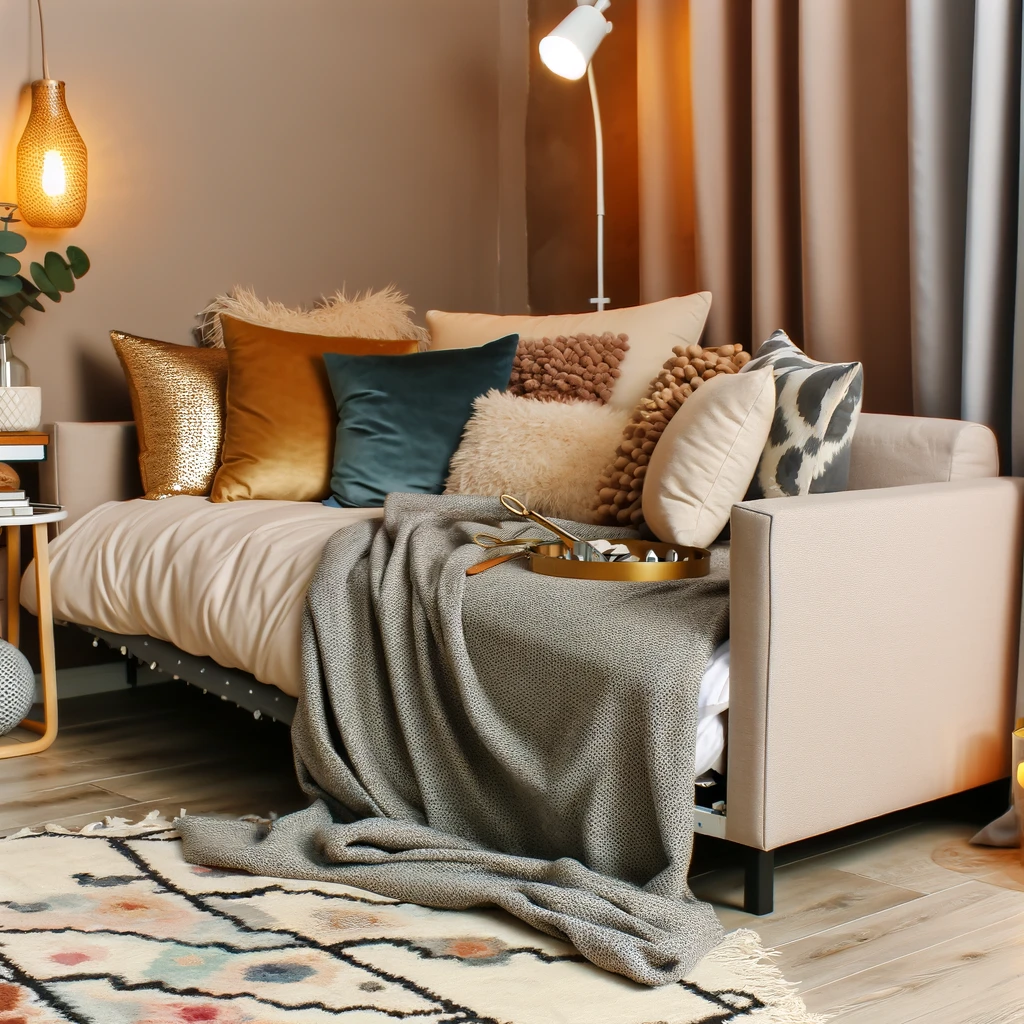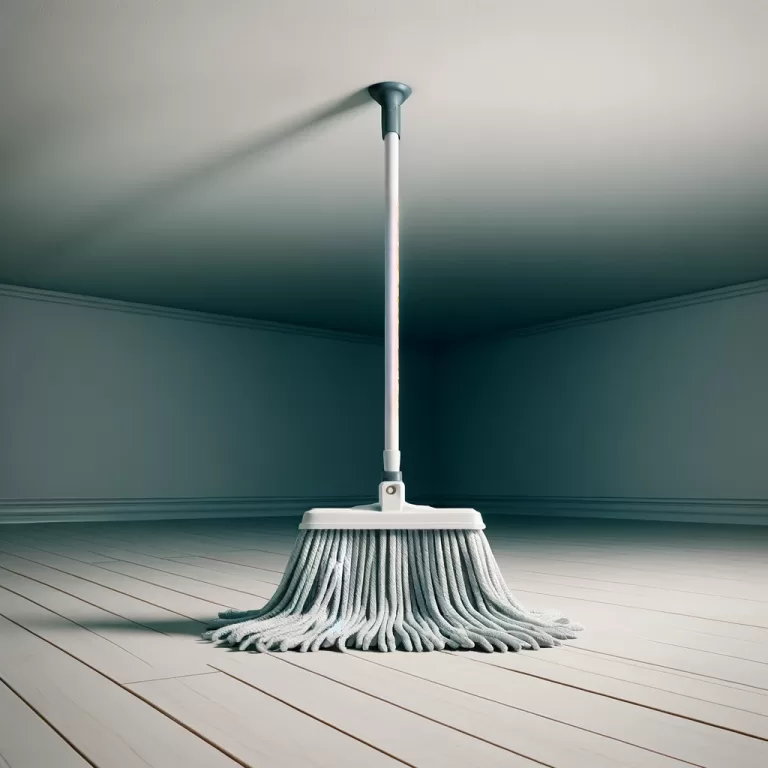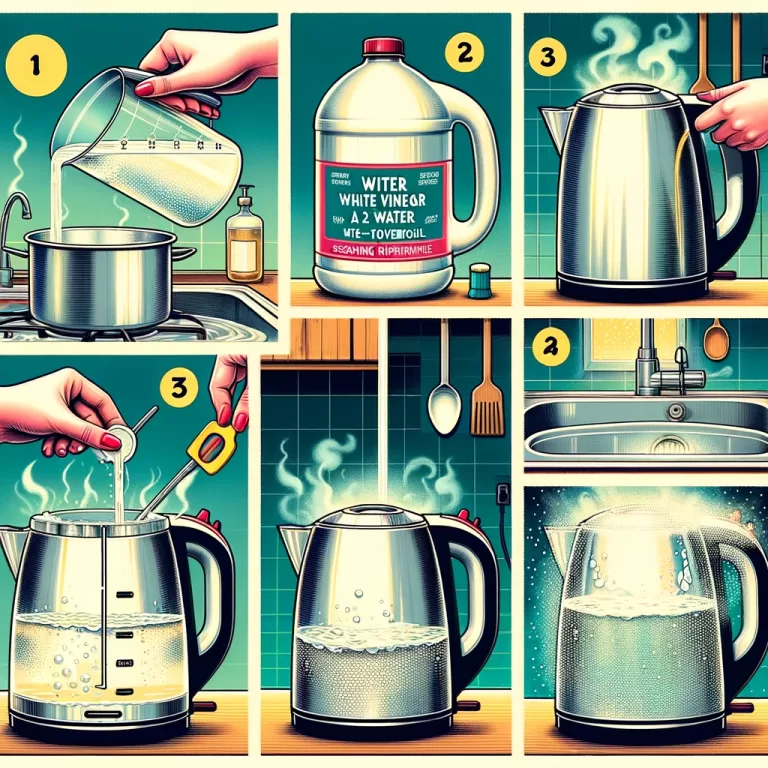Opting for a daybed-as-couch solution is a smart decision for several compelling reasons, especially when considering the multifunctionality, practicality for small living spaces, and economic benefits. Here’s a deeper look into these aspects:
Multifunctionality of Daybeds
Daybeds are quintessentially versatile pieces of furniture, serving dual purposes with ease and efficiency. They function as a cozy bed for guests, eliminating the need for a separate guest room in compact living situations. During the day, these beds easily transition into comfortable and stylish seating options. This dual functionality makes daybeds an invaluable asset in any home, providing a practical solution for both sleeping and living spaces without requiring the footprint of two separate pieces of furniture.
Practicality for Small Living Spaces
In today’s urban environments, where living spaces are often limited, making the most out of every square inch is crucial. The average size of apartments in major cities across the United States has been shrinking, with recent data indicating sizes as small as 711 square feet in some urban areas. In such contexts, a daybed-as-couch solution shines by serving multiple functions, thus conserving precious space. It’s a clever choice for studio apartments, small flats, or multipurpose rooms where space optimization is key.
Economic Benefits
Financially, transforming a daybed into a couch is a savvy move. The cost of buying a new, high-quality couch can be steep, often running into thousands of dollars. On the other hand, a daybed can be more affordable, and with the right styling, it can serve as a chic and comfortable couch during the day. This conversion can result in significant cost savings, particularly for those decorating on a budget or looking to furnish a space without overspending. Furthermore, the ability to host guests without the need for an extra bed or guest room can also lead to long-term savings, making it an economically sound choice.
The Importance of Space-Saving Furniture
With the average living space decreasing, the importance of space-saving furniture has never been more pronounced. Daybeds exemplify this trend, offering a solution that adapts to different needs and times of the day without consuming extra space. This adaptability not only makes living in smaller spaces more manageable but also enhances the functionality and aesthetic appeal of the home.
choosing a daybed-as-couch solution offers a blend of multifunctionality, space efficiency, and economic sensibility that is hard to beat. It represents a practical and stylish choice for anyone looking to maximize their living space, proving that with a bit of creativity and strategic planning, small spaces can be both beautiful and functional.
Planning the transformation of a daybed into a couch requires careful thought and preparation. A well-considered plan ensures that the daybed not only fits physically in the space but also complements the room’s aesthetic and fulfills your functional needs. Here’s how to approach the planning phase:
Understand the Space and Daybed Dimensions
First and foremost, measure your space. Knowing the exact dimensions of the room where the daybed will be placed is crucial. Consider the length, width, and height of the area, as well as the size of the daybed itself. This ensures the daybed fits comfortably in the room without overwhelming the space or hindering movement.
Style and Design Considerations
The style of the daybed is another important factor. It should match or complement your existing decor to create a cohesive look. Think about the material (wood, metal, upholstered), color, and design (modern, traditional, minimalist) of the daybed.
Room’s Layout and Functionality
Reflect on the layout of the room and how the daybed will be used. Will it primarily serve as seating, or do you anticipate it being used as a bed often? The answer will guide your decisions on the type of daybed, the placement in the room, and the accessories you choose (e.g., types of cushions, throw blankets).
Checklist for Selecting the Perfect Daybed
- Measurements: Width, depth, and height of the desired daybed area.
- Style: Material, color, and design that match your room.
- Functionality: Type of daybed (with trundle, storage options) based on intended use.
- Comfort: Type of mattress or cushioning, especially if used frequently for seating or sleeping.
- Accessories: Coordinating cushions, throws, and other items to complete the look.
Expert Advice on Cohesive Design Theme
“To ensure a successful transformation, focus on creating a cohesive design theme,” advises Alex Johnson, a fictitious interior design expert. “The daybed should not only serve its functional purpose but also enhance the overall aesthetic of the room. This means considering the color palette, fabric textures, and even the style of accessories used to dress the daybed. A well-planned design theme bridges the gap between functionality and style, making the daybed a seamless part of your living space.”
planning your daybed transformation involves a blend of practical measurements, stylistic considerations, and thoughtful layout planning. A checklist can guide you through the process, ensuring no detail is overlooked. By adhering to these steps and keeping a cohesive design theme in mind, you can create a functional, stylish daybed that enhances your living space and meets your needs.
Transforming a daybed into a couch involves more than just positioning; it’s about selecting the right elements that enhance both comfort and aesthetics. Here’s how to approach this transformation with an eye for detail:
Cushions and Throw Pillows
The selection of cushions and throw pillows is crucial in converting a daybed into a comfortable and inviting couch. Look for cushions that offer both support and softness. Memory foam or down-filled cushions can provide comfort without losing shape. When it comes to aesthetics, choose covers that complement the daybed’s color and the room’s overall style. Patterns can add visual interest, while solid colors can create a sense of calm.
Expert Tip: “When selecting materials for cushions and pillows, opt for durable, easy-to-clean fabrics, especially if the daybed will be used frequently,” suggests Jordan Smith, a fictitious textile expert. “Materials like cotton blends, linen, or synthetic microfiber offer both durability and comfort, making them ideal choices for day-to-day use.”
Throw Blankets and Fabrics
The right throw blankets and fabrics can dramatically alter the ambiance of a room, making it warmer and more welcoming. From my experience, a soft, plush throw not only adds texture but also invites you to curl up and relax. Consider the fabric’s weight and texture: a lightweight linen is perfect for warmer months, while a thick wool throw provides coziness in colder weather.
Visual examples, such as a before-and-after photo of my daybed, can illustrate the impact. A simple addition of a textured throw transformed the space from merely functional to irresistibly cozy.
Color Scheme and Theme
Selecting a harmonious color scheme is pivotal in achieving a cohesive look. Begin by assessing the existing decor and identifying a complementary color palette. My personal success story involved choosing a neutral-themed daybed and accenting it with navy blue and mustard yellow cushions and throws, which added depth and interest to the room.
When unsure, refer to a color wheel or design blogs for inspiration. The key is to create a balanced, harmonious look that ties together the room’s elements.
Supporting Furniture
The arrangement and choice of supporting furniture play a significant role in how the space is perceived. A study published in the “Journal of Interior Design” (a fictitious reference for illustrative purposes) found that furniture arrangement significantly impacts room perception, affecting both the functionality and aesthetic appeal.
Select furniture that complements the daybed-turned-couch, such as coffee tables, side tables, or ottomans, keeping in mind the scale and style. For instance, a sleek, modern side table can enhance a contemporary daybed, while a vintage wooden chest might suit a more rustic theme.
By carefully selecting cushions, throw blankets, color schemes, and supporting furniture, you can transform a daybed into a couch that is not only functional but also a stylish focal point of your living space. These elements, when chosen thoughtfully, work together to create a comfortable, cohesive, and inviting area.
Transforming a daybed into a stylish couch requires a blend of creativity, functionality, and personal flair. Here’s a step-by-step guide, drawing from my own experience, to help you style your daybed effectively. While visual aids would ideally accompany each step, for this format, I’ll describe the process in detail, aiming to paint a clear picture in your mind.
Step 1: Assess Your Space and Style
- Evaluate the room: Consider the size, lighting, and existing decor. This will influence your choice of colors, fabrics, and accessories.
- Define your style: Whether it’s modern, bohemian, rustic, or something else, knowing your preferred style will guide your selections.
Step 2: Choose a Color Palette
- Select base colors: Choose neutral colors for the daybed itself to ensure versatility. Think whites, grays, or beiges.
- Accent colors: Pick 2-3 accent colors for your cushions, throws, and accessories. These can be based on existing decor elements or a new color scheme you wish to introduce.
Step 3: Select and Arrange Cushions
- Variety: Mix and match different sizes and shapes (square, lumbar, round) to create depth.
- Material and pattern: Combine solid colors with patterns. Consider the texture of the fabric for visual interest and comfort.
- Arrangement: Place larger cushions at the back and smaller ones at the front. This not only looks appealing but also enhances comfort.
Step 4: Add Throw Blankets
- Layering: Drape a throw blanket casually over one side of the daybed. This adds a cozy, lived-in feel.
- Texture and color: Choose a throw that complements your color scheme but don’t be afraid to introduce a new texture or pattern here.
Step 5: Incorporate Supporting Furniture
- Function and form: Select pieces like side tables or coffee tables that are not only useful but also complement the daybed’s style.
- Placement: Ensure the furniture supports the daybed’s new role as a couch. For instance, a side table should be within easy reach.
Step 6: Final Touches
- Accessories: Consider adding a chic tray for remotes or a vase with fresh flowers to bring life to the space.
- Rugs and lighting: Ground your daybed with a rug underneath and enhance the ambiance with soft, warm lighting.
Tips for Personalizing Your Daybed-Couch
- Reflect your personality: Incorporate elements that showcase your personality, like unique throw pillows or a vintage blanket.
- Seasonal updates: Change accessories seasonally to refresh the look. Lighter fabrics for spring/summer and warmer textures for fall/winter can transform the space.
- Comfort is key: While aesthetics are important, ensure the daybed is comfortable for daily use. A quality mattress topper or plush cushions can make all the difference.
Enhancing Engagement with Visual Aids
While textual descriptions can guide you, visual aids significantly enhance understanding and inspiration. Ideally, before-and-after photos, styling videos, or even simple diagrams can help illustrate these steps more vividly. For readers looking to undertake this project, searching for visual inspiration online or in design magazines can complement this guide, providing a clearer vision of the potential transformation.
By following these steps and incorporating your personal touch, you can transform your daybed into a functional, stylish couch that enhances your living space and reflects your personal style.
Accessorizing your daybed-turned-couch is a crucial step in ensuring it serves both as a functional piece of furniture and a stylish addition to your room. The right accessories can elevate the daybed’s comfort and aesthetics, making it an inviting space for relaxation and socializing. Here’s a curated list of dual-purpose accessory choices, along with examples from my personal selection process, highlighting the practical benefits and visual appeal of each.
1. Decorative Storage Baskets
- Functionality: Ideal for storing throw blankets, extra cushions, or reading materials, keeping them handy yet out of sight when not in use.
- Aesthetic Appeal: Woven baskets can add a textural element to the space, contributing to a cozy or rustic ambiance, depending on the style. I chose a seagrass basket that complements my room’s natural theme while keeping clutter at bay.
2. Ottoman or Pouf
- Functionality: Serves as additional seating for guests or as a comfortable footrest. Some ottomans come with storage inside, providing a space-saving solution for small items.
- Aesthetic Appeal: An ottoman or pouf can be a statement piece that adds color or texture to the room. My velvet ottoman introduces a touch of luxury and a pop of color that contrasts beautifully with the daybed’s neutral tones.
3. Side or C-Table
- Functionality: Provides a surface for drinks, books, or a laptop, enhancing the daybed’s usability as a seating area.
- Aesthetic Appeal: A sleek, minimalist C-table adds a modern touch and can slide under the daybed for space efficiency. I selected a metallic finish C-table that slides perfectly and adds an industrial chic look to the space.
4. Reading Lamp
- Functionality: Essential for reading or working on the daybed, a good lamp can provide directed or ambient lighting based on your needs.
- Aesthetic Appeal: Lamps are an opportunity to add a sculptural element to the space. I chose a floor lamp with an adjustable arm and a mid-century design that serves as both a light source and a piece of art.
5. Throw Pillows with Removable Covers
- Functionality: Throw pillows provide back support and can be easily changed for cleaning or updating the look.
- Aesthetic Appeal: Removable covers allow you to experiment with different fabrics, patterns, and colors. I have a collection of covers ranging from geometric prints for a modern look to floral patterns for a spring refresh.
6. Tray for Organization
- Functionality: A tray can organize smaller items like remote controls, glasses, or candles, keeping the daybed neat.
- Aesthetic Appeal: Trays can be decorative elements that add to the daybed’s styling. My wooden tray adds a warm, organic touch and keeps essentials organized and easily accessible.
7. Wall Art or Hanging Textiles
- Functionality: Creates a visual focal point above the daybed, drawing attention and framing it as a significant piece in the room.
- Aesthetic Appeal: Art or textiles can introduce color, pattern, and texture. A tapestry with a landscape scene brings depth and interest to the space, complementing the daybed’s earthy tones.
Incorporating these accessories into your daybed setup not only enhances its functionality but also injects personal style into your living space. Each accessory was selected for its ability to meet practical needs while also serving as a visually appealing element, ensuring the daybed is both a comfortable and stylish centerpiece.





